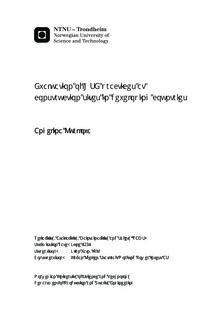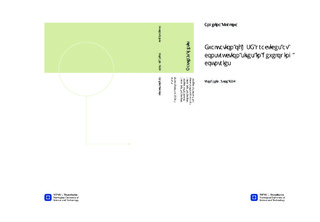| dc.description.abstract | The main objective of this master’s work was to investigate whether the HSE initiatives developed by the company are suitable for achieving good safety results at construction sites in contractual environment in developing countries. This has been conducted by evaluating these HSE initiatives implemented by the Principle Contractor at one of company’s construction projects. The project is executed to build a run-of-the-river hydropower plant in the chain of the Andes in Peru. The evaluated HSE initiatives were safety inspections, Job Safety Analysis and reporting of unwanted occurrences at site. The evaluation was conducted through analysis of the implementation of HSE initiatives and their immediate and long-term effects. HSE initiatives were checked to see if they had been implemented as planned and according to the best industry practices in construction safety in developing countries. The immediate effects of HSE initiatives were analysed to assess the quality of implementation of HSE initiatives and their contribution to achieving the good safety result at the project. The long-term effects were evaluated scrutinising a trend in injury rates, actual visual compliance at site and adequacy of safety climate at the project. The results of the evaluation showed that safety inspections and reporting of unwanted occurrences have been implemented by Principle Contractor according to company’s HSE requirements and the best industry practices. The implemented Job Safety Analysis routines did not satisfy company’s HSE requirements. The evaluation showed that the achieved immediate effect of HSE activities is not satisfactory due to the delay with execution of remedial actions; moreover, the potential functionality of Job Safety Analysis and reporting of unwanted occurrences was not fully used at the project. The long-term effect of the evaluated HSE activities was assessed as satisfactory. This was concluded based on that the measurement of safety climate has given a positive result, while a trend of the injury rate and the measurement of visual compliance to national safety regulations and international standards deviated from a desirable results. The results of the evaluation were considered in the light of different internal and external factors which might influence implementation of HSE initiatives and overall safety at the project. The difficulties with the implementation of Job Safety Analysis can be partially explained by a low level of professional and safety education and consequently low demands to workplace safety by workers due to the current economic situation in the country. In addition, a strong hierarchy, typical for the national culture of this country, hindered a proper cooperation between supervisors and workers for execution of Job Safety Analysis. Further, contractor’s general management did not allocate an HSE responsibility on supervisors and did not demonstrate importance of safety at the project. This also affected immediate and long-terms effects of Job Safety analysis, safety inspections and reporting of unwanted occurrences. The difficulties to achieve a positive immediate effect can be attributed mainly to lack of contractor’s general management support in execution of remedial actions and human factors such as workers’ and supervisors’ level of education, religiousness and their attitude to risk-taking. The satisfactory long-term effect can be explained by a proper implementation of company’s HSE requirements, effective work of contractor’s HSE department and compliance to strong HSE requirements from International Finance Corporation which provided a loan to the company for the project execution. Therefore, it was concluded that company’s approach of using the contract to implement its Policy on HSE in developing countries through HSE requirements to contractors is effective when it comes to long-term effects on safety at the projects, but strongly affected by economic situation, national culture, contractor’s general management attitude to safety and human factors. | nb_NO |

